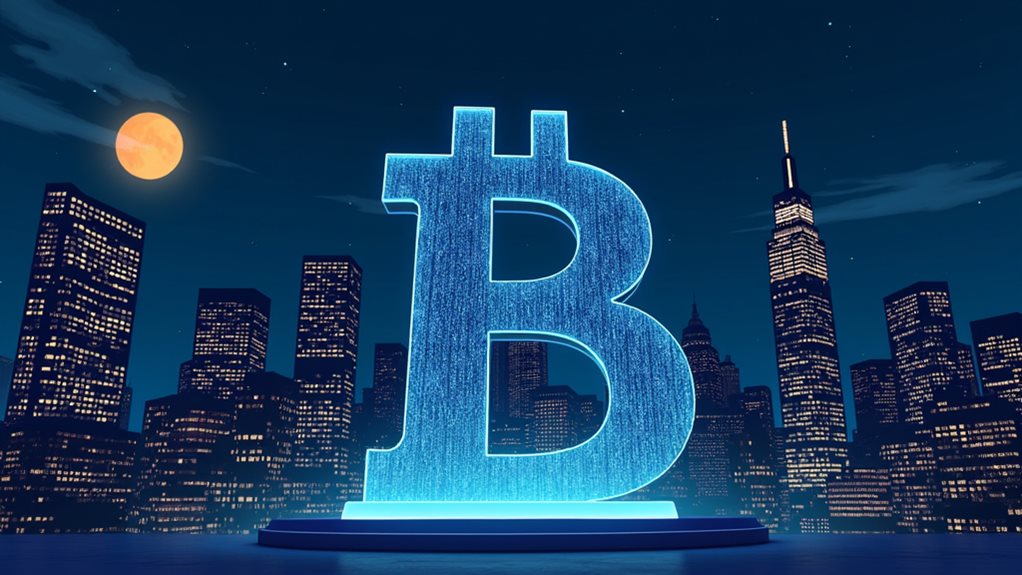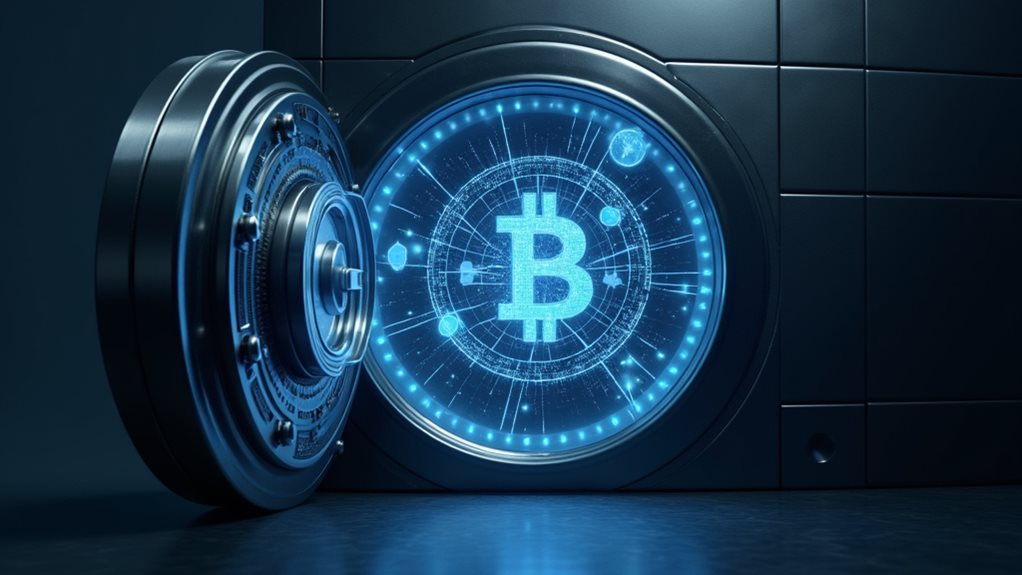JPMorgan’s dramatic about-face on crypto just got real with their JPMD trademark filing. Despite CEO Jamie Dimon’s notorious crypto-bashing, the banking giant is diving headfirst into digital assets, partnering with Bank of America and Wells Fargo on stablecoin projects. Their existing JPM Coin infrastructure already processes $2 billion daily on Ethereum-based tech. And get this – the filing date is 2025, proving they’re playing the long game. The full story might surprise even the skeptics.

JPMorgan, the banking giant that once scoffed at crypto, is diving headfirst into digital assets with its new JPMD trademark filing. The move signals a dramatic shift for the institution, especially considering CEO Jamie Dimon‘s previous crypto skepticism. Talk about eating your words. The filing date of June 16, 2025 showcases the bank’s forward-thinking approach to digital assets.
The trademark filing with the U.S. Patent and Trademark Office covers a broad spectrum of digital asset services, from trading and exchanges to payments and transfers. It’s not merely dipping a toe in the water – JPMorgan‘s going for a full cannonball splash into the crypto pool. Notably, the bank is joining forces with major players like Bank of America and Wells Fargo in exploring collaborative stablecoin initiatives. The recent OCC approval has paved the way for banks to engage in crypto activities without prior regulatory hurdles.
Building on their existing JPM Coin and private blockchain network Kynexis, which already processes a whopping $2 billion in daily transactions, this isn’t some half-baked experiment. The bank’s infrastructure is getting serious. Their Ethereum-based technology powers JPM Coin, while their private blockchain network Kynexis provides a secure playground for institutional clients.
JPMorgan’s serious blockchain game combines JPM Coin and Kynexis, processing $2B daily through cutting-edge digital infrastructure for institutional players.
These aren’t your average crypto bros trading meme coins in their parents’ basement – we’re talking sophisticated settlement, custody, and compliance tools. Wall Street’s crypto acceptance is reaching fever pitch, and JPMorgan isn’t about to be left behind.
The JPMD trademark hints at possible stablecoin offerings and broader crypto platform development. Pretty ironic for a bank that once called cryptocurrency a fraud. But hey, money talks, and digital assets are screaming.
The regulatory environment is evolving, and JPMorgan’s playing it smart. Their move aligns perfectly with developing U.S. regulatory frameworks, backed by robust compliance systems. They’re not merely jumping on the bandwagon – they’re building their own luxury crypto carriage.
For institutional clients interested in crypto, this expansion is like Christmas coming early. JPMorgan’s leveraging its existing infrastructure and massive client base to position itself as a digital asset powerhouse.
The competition? They’re probably sweating bullets. With their resources, technology, and now this trademark filing, JPMorgan’s sending a clear message: traditional banking is going digital, whether you like it or not.









